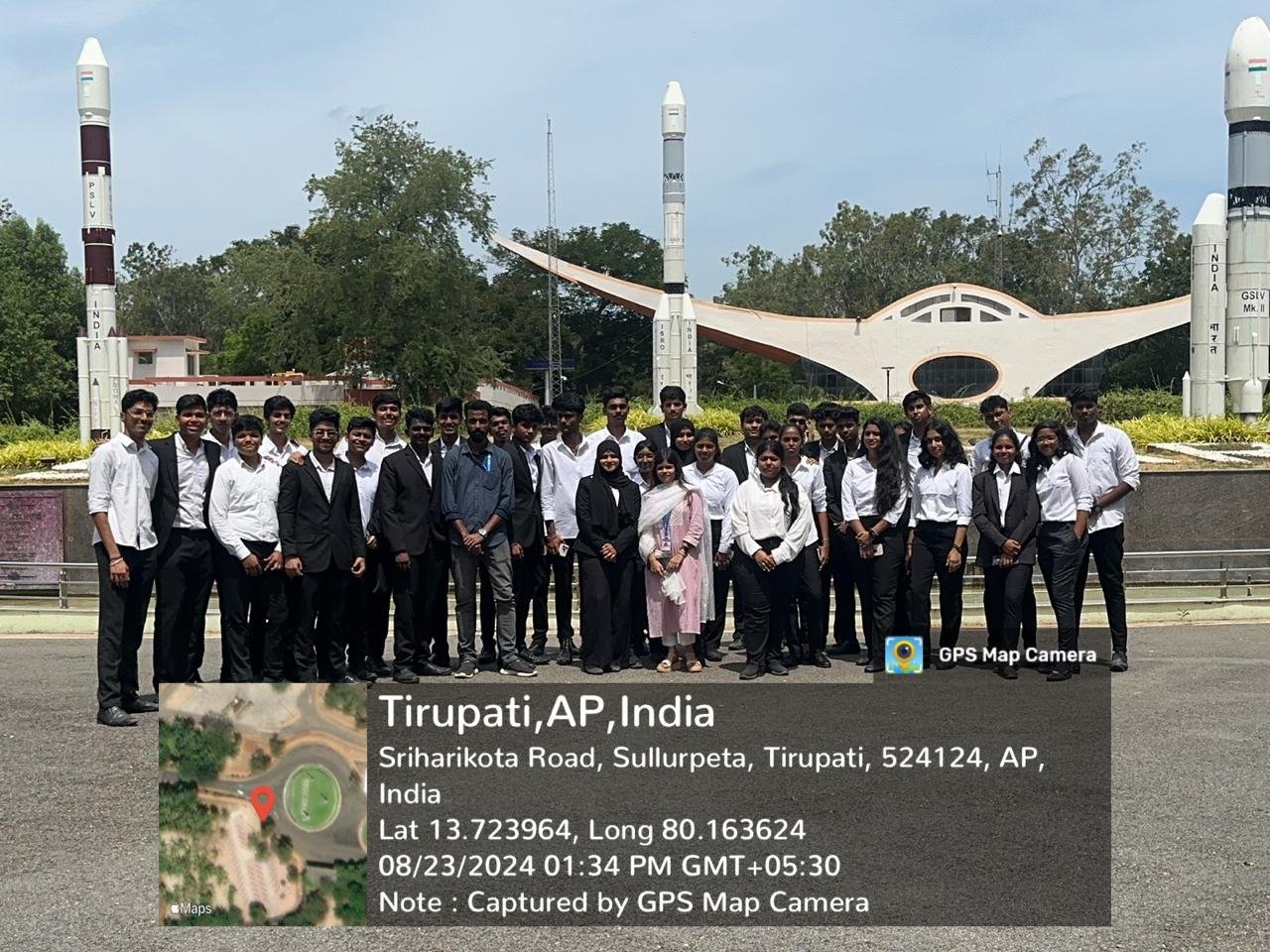Educational trip to the Satish Dhawan Space Centre (SHAR)
On August 23, 2024, in celebration of National Space Day, the Department of International Law and International Law Society of Saveetha School of Law organized an enlightening educational trip to the Satish Dhawan Space Centre (SHAR). This visit was designed to provide 40 students and faculty members with a rare glimpse into the world of space science and technology at one of India’s leading space research facilities.
The journey began early in the morning, as participants departed from Saveetha School of Law, filled with excitement and curiosity. After a few hours of travel, the group arrived at Sriharikota, the location of the esteemed Satish Dhawan Space Centre. This center, named after the pioneering Indian space scientist Dr. Satish Dhawan, is central to India’s space missions, including satellite launches and other groundbreaking projects under the Indian Space Research Organisation (ISRO).
Upon their arrival, the group was warmly welcomed by officials from SHAR who had carefully planned an engaging agenda for the day. The visit commenced with a short film that introduced the space center, providing a historical overview and showcasing its significant contributions to India’s space program. The documentary offered insights into the vital role that SHAR plays in India's space exploration efforts, highlighting its involvement in launching satellites and contributing to international space missions.
Following the film, the students and faculty were briefed on the center's current and upcoming projects. The officials shared detailed information about the various satellites and space missions that had been launched from SHAR, emphasizing the technological advancements and innovations that have positioned India as a leader in space exploration.
The next highlight of the visit was a tour of the Mission Control Centre (MCC), the hub where all satellite launches at SHAR are meticulously monitored and controlled. The students were captivated as they observed the high-tech operations within the MCC. The head of the Mission Control Centre provided an in-depth explanation of how a satellite launch is planned and executed, describing the intricate process of monitoring the satellite’s trajectory, the communication systems in place, and the contingency plans that ensure the success of each mission. This experience gave the students a deep appreciation for the precision and expertise required to carry out space missions.
Following the MCC tour, the group visited the first and second launch pads, where rockets are assembled, tested, and launched into space. These launch pads have been the sites of many of India's successful satellite launches, including those for communication, weather observation, and scientific research. The head of the launch facilities, who accompanied the group, provided a detailed briefing on the technical aspects and the working mechanisms of the launch infrastructure. He explained the processes involved in preparing a rocket for launch, the safety protocols followed, and the challenges encountered during the launch phase. The students were particularly fascinated by the scale and complexity of the equipment and systems used in rocket launches.
The visit to the Satish Dhawan Space Centre concluded with a final session where officials addressed the students' questions and shared additional insights into India’s future space missions and projects. The participants expressed their gratitude to the officials for the opportunity to learn about the critical work being done at SHAR and for the invaluable experience of seeing a real space research facility in action.
After a day filled with learning and exploration, the group returned to Saveetha School of Law, enriched with new knowledge and inspired by the incredible work being done at the Satish Dhawan Space Centre. The trip not only provided practical exposure to the students but also deepened their understanding of space law and its applications in the context of India’s space endeavors. Celebrating National Space Day with such a significant visit made the experience even more memorable, leaving the participants with a renewed interest in space science and technology



